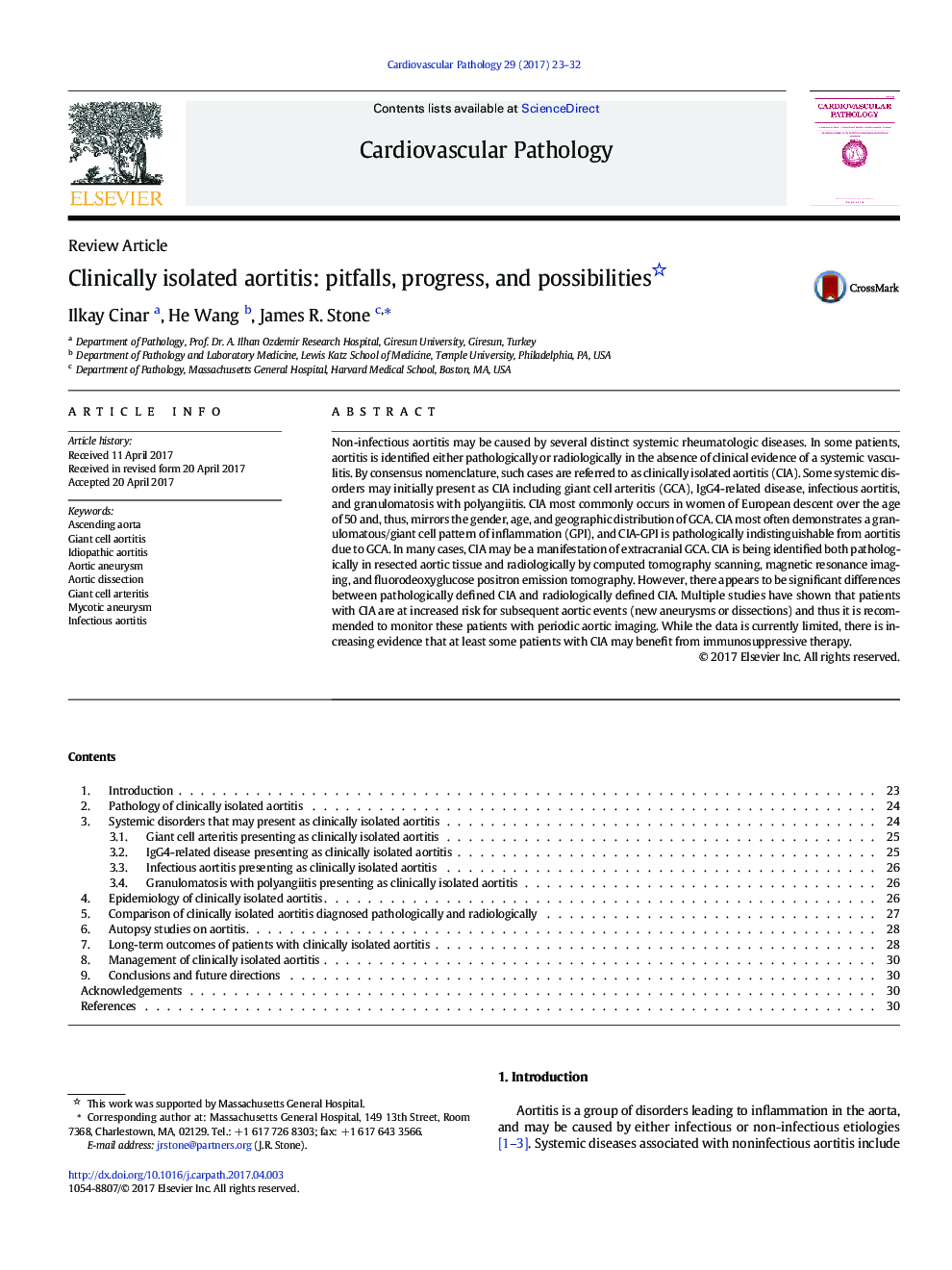| Article ID | Journal | Published Year | Pages | File Type |
|---|---|---|---|---|
| 5600093 | Cardiovascular Pathology | 2017 | 10 Pages |
Abstract
Non-infectious aortitis may be caused by several distinct systemic rheumatologic diseases. In some patients, aortitis is identified either pathologically or radiologically in the absence of clinical evidence of a systemic vasculitis. By consensus nomenclature, such cases are referred to as clinically isolated aortitis (CIA). Some systemic disorders may initially present as CIA including giant cell arteritis (GCA), IgG4-related disease, infectious aortitis, and granulomatosis with polyangiitis. CIA most commonly occurs in women of European descent over the age of 50 and, thus, mirrors the gender, age, and geographic distribution of GCA. CIA most often demonstrates a granulomatous/giant cell pattern of inflammation (GPI), and CIA-GPI is pathologically indistinguishable from aortitis due to GCA. In many cases, CIA may be a manifestation of extracranial GCA. CIA is being identified both pathologically in resected aortic tissue and radiologically by computed tomography scanning, magnetic resonance imaging, and fluorodeoxyglucose positron emission tomography. However, there appears to be significant differences between pathologically defined CIA and radiologically defined CIA. Multiple studies have shown that patients with CIA are at increased risk for subsequent aortic events (new aneurysms or dissections) and thus it is recommended to monitor these patients with periodic aortic imaging. While the data is currently limited, there is increasing evidence that at least some patients with CIA may benefit from immunosuppressive therapy.
Keywords
Related Topics
Health Sciences
Medicine and Dentistry
Cardiology and Cardiovascular Medicine
Authors
Ilkay Cinar, He Wang, James R. Stone,
